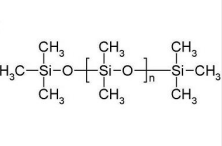Enhanced TDS
Identification & Functionality
- Blend
- No
- CASE Ingredients Functions
- Chemical Family
- Function
- Monomer
- Product Code
- MITM00437
- Single Ingredient
- Yes
- Technologies
- Product Families
Features & Benefits
- CASE Ingredients Features
- Labeling Claims
- Performance Highlights
EBECRYL® 8296 is characterized by
- Light color
- Semi-crystalline state
Cured products containing EBECRYL® 8296 are characterized by the following performance properties:
- Haptic properties
- Soft , “silky” feel to the touch
- Flexible
- Exterior durability
- Non-yellowing
- Excellent adhesion to difficult substrates, particularly vinyl.
The actual properties of UV/EB cured products also depend on the selection of other formulation components such as reactive diluents, additives, and photoinitiators.
Applications & Uses
- Coating End Applications
- Compatible Substrates & Surfaces
- Cure Method
- Ink & Toner End Applications
- Markets
- Applications
- Product Applications
EBECRYL® 8296 is recommended for use in coatings requiring soft touch/haptic property
- In-mold decoration
- Coatings for plastics
- Automotive coatings
- Screen Inks
- Flexographic inks
- Exterior durable coatings
Properties
Technical Details & Test Data
- Viscosity Reduction
EBECRYL® 8296 can be formulated with reactive dilutes such as dipropylene glycol diacrylate (DPGDA) , 1,6-hexanediol diacrylate (HDDA), , and tripropylene glycol diacrylate (TPGDA) . Although viscosity reductions can be achieved with non-reactive solvents, reactive diluents are preferred because they are essentially 100% converted during UV exposure to form an integral part of the coating, thus avoiding solvent emissions. The specific reactive diluent used will influence performance properties such as flexibility and adhesion. Graph I illustrates the change in viscosity of EBECRYL® 8296 with increasing temperature.
Graph I illustrates the change in viscosity of EBECRYL® 8296 with increasing temperature.

Safety & Health
- Precaution
- Avoid contact with eyes, skin and clothing. Direct contact with this material may cause mild eye and skin irritation.
- Repeated or prolonged dermal contact may cause allergic skin reactions. Wash thoroughly after handling.
- Use with adequate ventilation. Keep container closed.
Packaging & Availability
Principal Information
- Group Principal Number
- S000001
- Principal
Storage & Handling
- Storage and Handling Conditions
- The maximum recommended storage temperature for EBECRYL® 8296 is 30°C (86°F). Care should be taken not to expose the product to high temperature conditions, direct sunlight, ignition sources, oxidizing agents, alkalis or acids.
- This might cause uncontrollable polymerization of the product with the generation of heat. Storage and handling should be in stainless steel, amber glass, amber polyethylene or baked phenolic lined containers. Procedures that remove or displace oxygen from the material should be avoided.
- Do not store this material under an oxygen free atmosphere. Dry air is recommended to displace material removed from the container.
- Upon storage, EBECRYL® 8296 may show signs of crystallization. This crystallization can be removed by heating containers of EBECRYL® 8296 to a uniform temperature of 60°C.
- Ovens or hotboxes are recommended methods of heating. Heating tapes should not be used. In typical formulations, EBECRYL® 8296 does not exhibit signs of crystallization.
Other
- Appearance
- Viscous liquid or white solid
- Appearance (SDS)
- Solid
- Color (SDS)
- Whitish, cloudy
- Item Number
- Odor (SDS)
- Ester like
- Other Hazards
- Polymerization may occur from excessive heat, contamination or exposure to direct sunlight, Contact with skin may cause a cross-allergic reaction in persons already sensitized to acrylates.
- Protect from Freezing
- Yes
- Temperature Control
- Yes
- USA/DOT UN Number
- Not Applicable
- Material Composition
Value Units Test Method / Conditions Isocyanate Content max. 0.1 % % Oligomer Content 100.0 - - Mechanical Properties
Value Units Test Method / Conditions Elongation 18.0 - at break, UV cured 125 μ thick films Tensile Modulus 2000.0 psi psi at break, UV cured 125 μ thick films Tensile Modulus 2000.0 psi psi UV cured 125 µ thick films Tensile Strength 300.0 psi psi at break, UV cured 125 μ thick films Tensile Strength 300.0 psi psi UV cured 125 µ thick films - Physical Properties
Value Units Test Method / Conditions Density 1.1 g/mL g/mL At 25°C Glass Transition Temperature (Tg) -1.0 °C °C at break, UV cured 125 μ thick films Glass Transition Temperature (Tg) -1.0 °C °C Dynamic Mechanical Analysis (DMA) UV cured 125 µ thick films Melting Point 53.0 °C °C Storage Temperature max. 86.0 °F °F Viscosity 1600.0-3200.0 - At 60°C - SDS Physical and Chemical Properties
Value Units Test Method / Conditions Density (SDS) 1.0 g/cm³ g/cm³ Flash Point (SDS) 106.1 °C °C Melting Point (SDS) 53.0 °C °C Viscosity (SDS) 2200.0-2700.0 - At 60°C - Shelf Life & Stability
Value Units Test Method / Conditions Shelf Life 0.0 -
